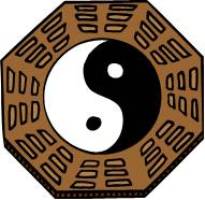The Potential Good Within Evil

Jewish mystics teach that even in the very heart of evil, there is a
spark of holiness and yearning for redemption. Our task is not to destroy, but to build; not to hate, but to
find a place of yielding; not to polarize, but to discover the points of commonality so that we can work
together.
Ein Sof
– the Endless, Limitless, Incomprehensible, Infinite
Being/Process beyond all the scriptural concepts and attributes of God – embraces everything, including the
totality of good and evil. The created universe can be viewed as a metaphysical magnet with one good pole
representing God and one evil pole representing Satan. Our activities, depending on their nature, draw us closer
to either God or Satan. Therefore, in simple terms, whatever draws us to God is good, and whatever draws us away
is evil. Our drawing to and connection with the magnet of goodness depends on factors such as the influence of
divine consciousness in our lives, our awareness of God’s presence, and how much time we spent exploring the
deeper meanings of life. We are drawn to the other end of the magnet when we submit to the opposing force – the
evil inclination in our natures, including lust, greed, status, fame, acquisition, and power, among others. Each
of these has the potential of seduction to draw us deeper into our
ego-structures.
In the universe, there is a constant tension of opposing forces, for
example, positive and negative, restrictive powers and expanding powers, yin and yang. This cosmic push and pull is the nature
of creation and the principle upon which good and evil are based.
Good and evil can be viewed as not a dichotomy or split between
opposites, but rather an enclosed universe of curved time and space. This can be graphically illustrated by a
mobius strip – a strip which before attaching the two ends has one end twisted to its opposite side. The two
sides of the strip are geometrically one. This is obviously not to say that good and evil are one, but rather
that each has a spark of the other, and if pushed far enough, this spark can be ignited. In other words, good
and evil can get to a point of overlap to the extent that either can transform into the opposite.
Rather than viewing evil as something that should be obliterated or at
least avoided, it can be seen as something that has a spark of divine nature within it and therefore, our
task is to uplift it – bringing good out of it. Evil, according to Jewish mystics, serves a primary function
in creation and therefore can never be eradicated even if we wanted to. Without something pulling us away
from the Divine, we would be overwhelmed by God and lose our free will. This paradigm suggests that God is in
every direction, represented by light. Satan is also everywhere, represented by veils. Evil then becomes a
force that dims the light.
The old way of looking at this issue is that something is inherently
evil. The new way points out that evil is not a thing or event, but rather it is related to awareness. Almost
everything can have both a good side and an evil side depending on what we do with it. Sometimes only time
will tell whether an event was good or evil – for example, a tragedy in retrospect can be seen as the best
thing that has happened to a person by turning their life around.
The question of good and evil is one of the most difficult of all and
doesn’t have an easy answer. In fact, the complexities of this issue go beyond reason and it is necessary to
draw on resources that transcend the mind and intellect. A new mind state and perspective, with fresh
insights into the question of good and evil, can be arrived at through spiritual practices such as
meditation, contemplation, and intense devotion.
Reference: Rabbi
David A. Cooper, God Is a Verb (New York, Riverhead Books, 1997), pp.
156-161
Australian
readers may find better values at Fishpond which sells discounted books and delivers them
postage-free.

| 

 Facebook
Facebook Twitter
Twitter Digg
Digg Stumbleupon
Stumbleupon